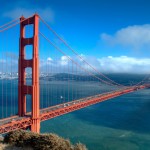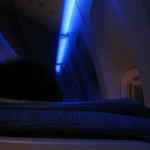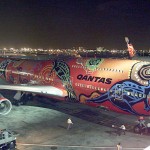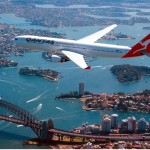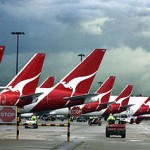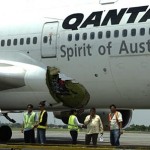Well continuing on with the theme of travel…I recently purchased airline tickets to San Francisco. I was thinking about the factors that influenced my purchase decision, and the decision process I went through before and during my purchase.
A few days ago, I had a sudden unsatisfied need to travel to San Francisco for Thanksgiving. In order to attain that desired state, I needed to find a means of transportation there. For me, this was a predominately functional need but there was also some psychological need behind it as I wanted to gain some personal gratification through enjoying the service both at the airport and in the plane; I wanted to feel like a valued customer.
So the search for information began. I knew from the outset that I was interested in only one form of transportation – flying – as it is the fastest way to travel. Bus, car and rail were too slow for me. I spent several hours researching because:
- I needed information outside my knowledge and experience on the other airlines that operated the route (external search for information).
- The perceived benefits of purchasing cheaper tickets, and choosing an airline that provided better customer service and that would depart and arrive on time at the times which I desired outweighed the energy and time I put into the search.
- I am a person who generally believes that I have control over the outcomes (internal locus of control). By actively comparing different airlines, I would be able to choose the one that provided the best value for me.
- Flying also entails some risk, specifically performance risk – e.g. poor safety and maintenance records; poor on-time departures and lousy customer service. There was also some financial risk as it is not uncommon for airlines to cancel flights and so I wanted to consider the flexibility of their cancellation policies – would I be offered compensation for my financial loss, alternative transportation to San Francisco or accommodation?
- Flying is a ‘shopping service’. I compared the different airlines through looking at surveys, customer blogs and comments, reading reviews and the airlines’ respective webpages in search for one that provided me with the best value in terms of price, service, safety and punctuality.
The alternatives which I found were Air Canada, Alaska Airlines, American Airlines, WestJet and United Airlines. My evaluative criteria consisted of several salient attributes – price, departure times, loyalty programs, inflight service, food and entertainment.
I was immediately attracted by WestJet’s cheap direct flights (US527). Its website was relatively easy to use but it was not very attractive, which was a situational factor that led me to question the quality of WestJet’s service. Personally, I am influenced by the aesthetics, colour schemes and ease-of-use of company websites. I form a link between the quality of the company’s websites and their products/services. I discovered that WestJet is a budget airline, only operated relatively small aircrafts (B737) and did not seem to provide food services on its aircraft. I was turned off by WestJet at that point.
So, I looked for other airlines. United Airlines also provided direct flights but it cost US859. Coupled with the negative experiences my friends and family have had with American Airlines ranging from poor cabin service to cramped seating and additional charges for checking-in luggage, I decided against choosing United Airlines.
Other airlines such as American Airlines were offering return flights for US452. Although this was considerably cheaper and allowed me to earn Qantas Frequent Flyer points/miles (as American Airlines is part of the Oneworld alliance), the inconvenience of the 2 hour stopover in Seattle deterred me from flying American Airlines. But I was impressed that American Airlines allowed consumers to hold their tickets for 24 hours at no charge, a feature which I have not seen with other airlines. However, I am not sure whether this will confer a sustainble competitive advantage for American Airlines because it is pretty simple for other competitors to duplicate.
Air Canada came was a company in my evoked set (i.e. acceptable airline). Its price (US633) seemed to reflect the value of its service; it was a good compromise between the cheapest and most expensive airfares. I was enticed by Air Canada’s complimentary checked-in luggage allowance (23kg), inflight food/beverage services, albeit at a charge, and by the fact that I could earn miles with Star Alliance member, Singapore Airlines. My past experience with Air Canada (for international flights) also influenced my decision – the aircraft had mood lighting, the inflight entertainment featured fairly recent movies and was quite extensive, the food and snack bar were acceptable, the flight departed and arrived punctually, and the cabin crew were responsive, attentive and friendly. Also, I generally believe that national airlines offer higher levels of service and safety (cognitive attitude) and so I usually patronise national airlines (behavioural attitude). I have also seen commercials advertising Air Canada as the Best North American Airline for 2010 (Skytrax World Airline Awards).
In the end, however, I chose to fly Alaska Airlines. It offered complimentary beverages and snacks, had an attractive website and was an airline recommended to me by several friends. It cost US550 for a direct flight at the same time as Air Canada’s flight, albeit it charged US20 for one piece of check-in luggage. However, my overall saving on the plane ticket was greater if I chose Alaska Airlines as opposed to Air Canada. I could also earn Qantas Frequent Flyer Points with Alaska Airlines.
Now I have yet to experience the flight and so I will blog on my check-in, inflight and postpurchase experiences later!
